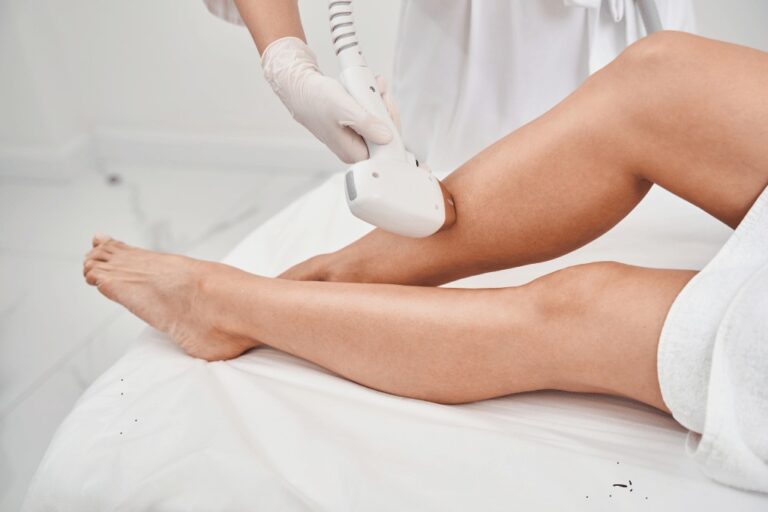If you’re tired of shaving every few days, dealing with painful waxing appointments, or battling stubborn ingrown hairs, you’ve probably looked into long-term hair removal options. One of the most popular choices right now? IPL hair removal.
You’ve probably noticed IPL Laser Hair Removal Handsets popping up all over your social media feeds, or maybe a friend can’t stop raving about hers. But if you’re new to this technology, you likely have plenty of questions: Is it safe? Does it really work? Will it be painful? In this beginner’s guide, we’ll walk you through everything you need to know before starting your IPL Laser Hair Removal Handset journey from how the device works, who it’s ideal for, how to use it safely, and what kind of results you can expect.
What is IPL Hair Removal?
IPL stands for Intense Pulsed Light. It’s a type of light-based hair removal method that targets the pigment (melanin) in your hair. The device emits gentle light pulses that are absorbed by the melanin in the hair shaft, which then converts to heat. This heat damages the hair follicle, slowing down or even stopping future hair growth.
Though it’s often compared to laser hair removal, IPL isn’t exactly the same. Laser hair removal uses a single, focused wavelength of light, while IPL uses multiple wavelengths. This makes IPL less intense, but also more versatile for home use.
Is IPL Hair Removal Safe?
Yes—when used properly, IPL is safe for most people, especially with the newer, smarter devices available today. That said, there are a few things to keep in mind:
- IPL works best on lighter skin tones with darker hair. This is because the device targets melanin; if your skin and hair are close in color, there’s a higher chance of the skin absorbing the light too, which can lead to irritation or damage.
- It’s not recommended for people with very dark skin tones or very light (blonde, grey, or red) hair.
- IPL should never be used on tattoos, dark moles, or broken skin.
Always read the instruction manual that comes with your device, and follow safety precautions carefully.
How to Prepare for IPL Hair Removal
To get the most out of your IPL treatments, you need to prep your skin the right way:
1. Shave First
This might sound counterintuitive, but yes—you should shave the area you want to treat. IPL targets the hair in the follicle, not the hair above the skin. Shaving removes surface hair while leaving the root intact.
Avoid waxing, plucking, or epilating before treatment, as these methods remove the root, making IPL ineffective.
2. Clean and Dry Your Skin
Make sure your skin is free of lotions, deodorant, perfumes, or any product that can create a barrier between the light and your skin.
3. Avoid Sun Exposure
Avoid tanning or sunbathing for at least 48 hours before and after treatment. Tanned skin contains more melanin and increases the risk of skin burns or discoloration.
How Often Should You Use IPL?
This depends on your device, but most manufacturers recommend:
- 1x per week for the first 4–12 weeks (this is the “active” hair removal phase)
- Then, once every 4–8 weeks for maintenance
Hair grows in cycles, and IPL is only effective during the “growth” phase. Consistency is key if you want long-lasting results.
Does IPL Hurt?
Most users describe the feeling as a warm snap or a light rubber band flick on the skin. It’s usually mild and well-tolerated. That said, sensitivity varies from person to person and also depends on the body area being treated.
Many modern devices offer adjustable intensity levels, so you can start on the lowest setting and increase as you get more comfortable.
How Long Until You See Results?
While results vary, most users start noticing less hair growth after 3–4 weeks, with significant results around 8–12 weeks. With regular maintenance, many people enjoy months of smooth, hair-free skin.
However, IPL isn’t necessarily permanent. Some hair may eventually grow back, but it’s usually finer and sparser. Occasional touch-up treatments help maintain your results.
Areas You Can Treat with IPL
At-home IPL devices are generally safe to use on:
- Legs
- Arms
- Underarms
- Bikini line
- Stomach
- Back
- Upper lip and chin (for women)
Some devices come with attachments specifically designed for facial or sensitive areas, making it easier to treat smaller or contoured spots.
Who Should Not Use IPL?
You should avoid IPL hair removal if you:
- Are pregnant or breastfeeding
- Have very dark skin (Fitzpatrick scale V–VI)
- Have light blonde, red, or grey/white hair
- Are taking medications that increase light sensitivity (like some antibiotics or acne treatments)
- Have skin conditions or open wounds in the treatment area
Always consult a dermatologist or medical professional if you’re unsure.
Final Thoughts
IPL hair removal can be a game-changer for anyone seeking a more permanent, hassle-free solution to unwanted hair. With a little patience and consistency, you can achieve smooth, stubble-free skin—without ever stepping into a salon.
For beginners, the key is starting slow, staying consistent, and following safety guidelines. Once you get into the routine, it’s surprisingly simple—and the results can be totally worth it.


